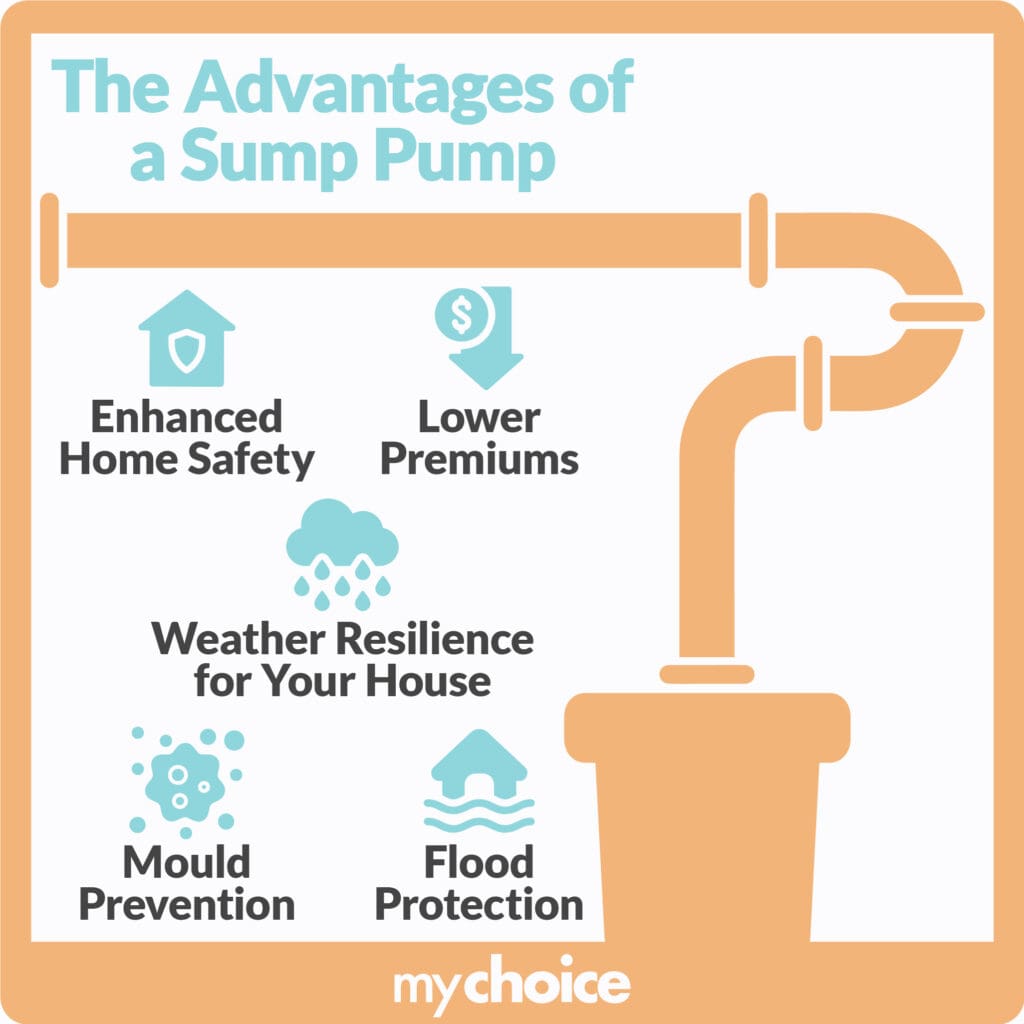One of the most important things you should know about sump pumps is that they can help prevent water damage at home. They also benefit your home insurance policy.
One of the questions we hear often is, “Does homeowners insurance cover sump pump failure?” Unfortunately, most homeowners insurance policies don’t. However, you can contact your home insurance company to check whether they provide endorsements or add-ons to protect your sump pump.
Generally, homeowners insurance policies in Ontario only cover the water damage caused by a failed sump pump and not the repair or replacement cost of the failed pump itself. However, that doesn’t mean installing a sump pump is useless; doing so has many benefits. To learn more about how home insurance can protect you from floods, check our guide on flood insurance.
What’s the Primary Use of a Sump Pump?
The primary use of a sump pump is to protect your home, especially your basement, from water damage. It’s especially important because about 80% of Canadian cities are wholly or partly located in flood zones. This includes many Ontario cities like Toronto, Ottawa, Mississauga, and Hamilton.
So, how do sump pumps counter flooding? They activate during heavy rainfall to prevent your basement from getting flooded. As an extra benefit, they also prevent mould from growing there due to moisture.
What other benefits can you get from installing a sump pump? Let’s take a look:
- Insurance incentives like discounts or lower rates since sump pumps reduce the risk of your home suffering water damage.
- Municipal subsidies can offset your sump pump’s installation costs. Some areas even provide you a full installation subsidy because sump pump installation is very important in mitigating floods.
Ontario Cities With Sump Pump Installation Subsidies
Many municipalities in Ontario provide sump pump installation subsidies because they recognize their importance in preventing floods. Here’s a table containing several Ontario cities that provide sump pump subsidies and their amounts:
| City | Subsidy Amount |
|---|---|
| Toronto | Up to $3,400 per property |
| Mississauga | Up to 100 percent, to a maximum of $6,000 |
| Lakeshore | Maximum of $225 |
| Windsor | Up to 100 percent, a maximum of $2,800 per property |
| Lambton Shores | Up to 100 percent, a maximum of $2,500 |
| Greater Sudbury | Up to 50 percent, a maximum of $2,250 |
| Peterborough | Up to $3,000 |
| Amherstburg | Up to 100 percent, a maximum of $300 |
Note that these subsidies may involve the installation of backwater valves as well as sump pit drainage systems. In some places where gravity drainage won’t work, the Ontario Building Code may require installing a sump pump.
Pros of Having a Sump Pump (Infographic)
If you’re wondering about the advantages of having a sump pump in your home, view our infographic below to learn more.

Sump Pump Lifespan and Maintenance
Your sump pump’s lifespan depends on how it’s used and maintained. Typically, you can go five to seven years before replacing your sump pump to ensure maximum reliability and efficiency. If your sump pump experiences problems before that, it may be wise to consider a replacement.
To ensure your sump pump works properly, you can test it at least once per year. You can test your sump pump by pouring water into the sump pit and see whether the float switch turns it on. It may be time for a repair or replacement if it doesn’t work or otherwise won’t successfully pump water out.
Key Advice From MyChoice
- Homeowners insurance generally doesn’t cover sump pump failure unless you purchase an endorsement or add-on from your insurer.
- Homeowners insurance does cover water damage caused by sump pump failure.
- Installing a sump pump can earn you home insurance incentives, which can come in the form of lowered rates or discounts.
- Some areas also offer subsidies to offset your sump pump installation costs.
- Sump pumps typically last five to seven years before they need replacing.
- You can install a sump pump yourself, but it’s recommended to have a professional do so to meet municipal subsidy requirements.








